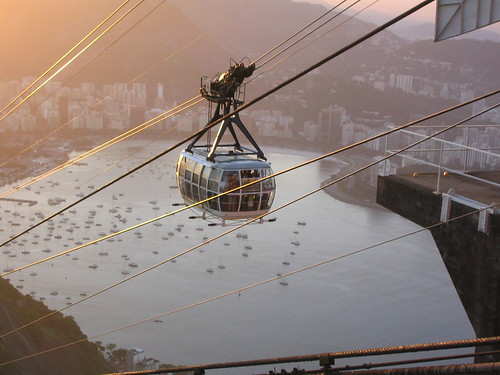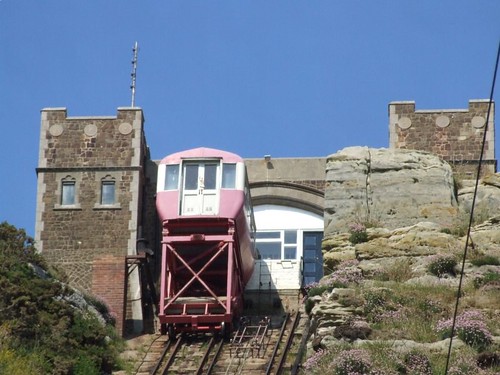There are two minor sub-groups of CPT technology: Aerial Trams and Funiculars.
Aerial Trams are like larger Gondolas. I’ll discuss this technology in greater detail later.
Generally speaking, however, Aerial Trams are (relative to Gondolas) an out-dated mode of Cable-Propelled Transit. Compared with Gondola technology, Aerial Trams exhibit longer wait times between vehicles; lower line capacity; an inability to turn corners; and little potential for intermediary stations.
Ironically, Aerial Trams are on average more expensive than Gondola technology despite their numerous short-comings. They are a high-cost, low-value technology.
Funiculars, on the other hand, are very similar to Cable Cars except Funiculars are used almost exclusively to ascend steep inclines. In fact, you’ll often find Funiculars referred to as Inclined Rails.
The incline of the vehicle is equivalent to the incline of the bottom-supporting guideway while standing and seating areas are at a flat incline relative to the horizon.
Traditional trains and rail lines are incapable of ascending greater-than-10-degree inclines which gives Funiculars are decided advantage.
Again, like in the previous post in the Basic Lessons series, because there has never been a CPT typology, people often incorrectly refer to Funiculars and Aerial Trams as Cable Cars.
Proceed to Basic Lesson 4 to learn about Support
Return to Basic Lesson 2 to learn about Gondolas & Cable Cars
Creative Commons images by Phillie Casablanca and Les Chatfield



4 Comments
Is it possible to have an idea of the cost range for funicular to negotiate a 60m high hillside? Otherwise iIt may depend on what kind of factors?
hi! Nice updates. I was thinking if it was possible to give more insights on the cost variations , advantages and disadvantages between different technologies used in hill/mountain cities. I’m a student currently pursuing a study on various technologies applicable for these special terrain cities(thesis) Would be really grateful if you could give me more details 🙂